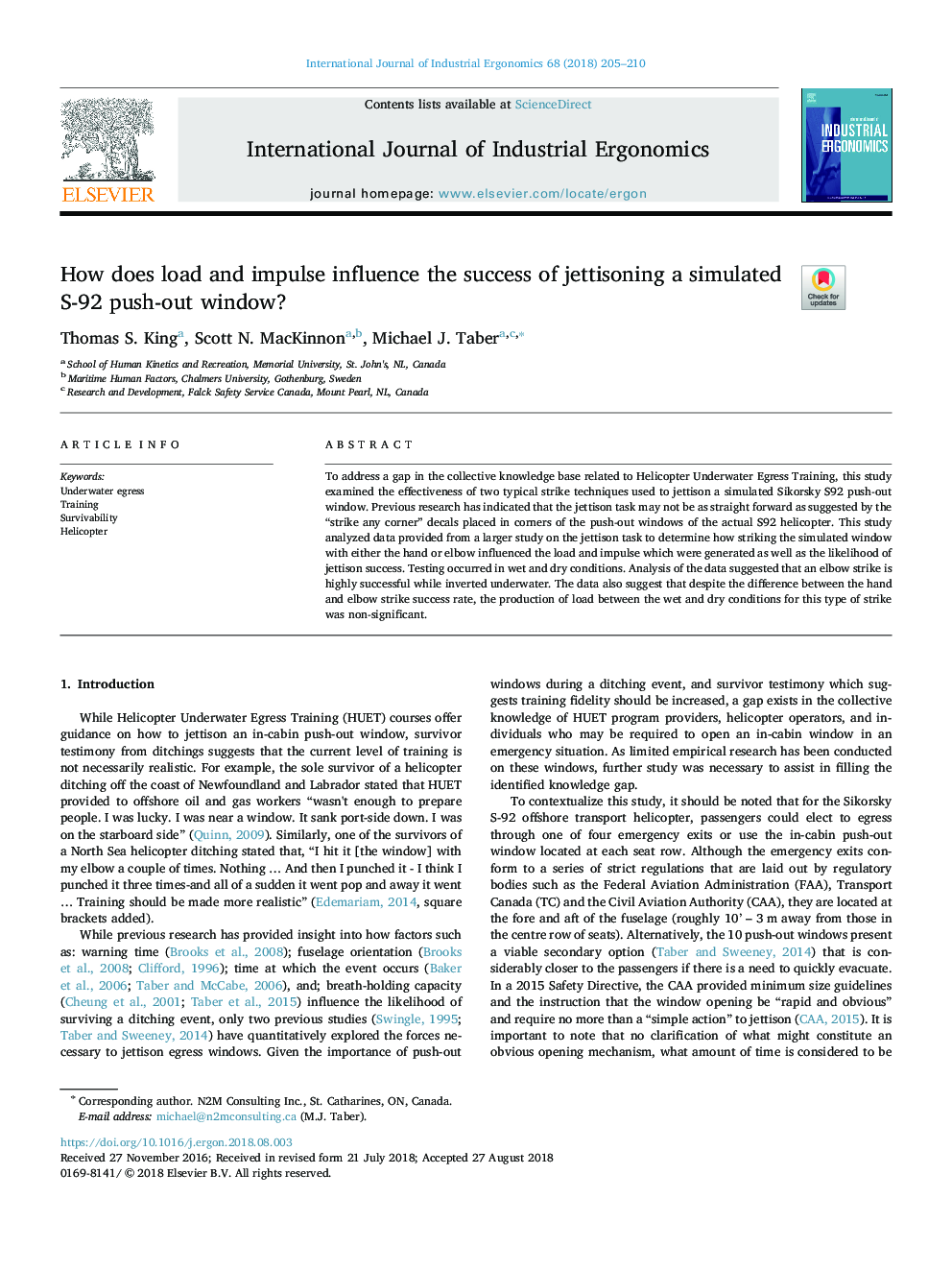| Article ID | Journal | Published Year | Pages | File Type |
|---|---|---|---|---|
| 11005556 | International Journal of Industrial Ergonomics | 2018 | 6 Pages |
Abstract
To address a gap in the collective knowledge base related to Helicopter Underwater Egress Training, this study examined the effectiveness of two typical strike techniques used to jettison a simulated Sikorsky S92 push-out window. Previous research has indicated that the jettison task may not be as straight forward as suggested by the “strike any corner” decals placed in corners of the push-out windows of the actual S92 helicopter. This study analyzed data provided from a larger study on the jettison task to determine how striking the simulated window with either the hand or elbow influenced the load and impulse which were generated as well as the likelihood of jettison success. Testing occurred in wet and dry conditions. Analysis of the data suggested that an elbow strike is highly successful while inverted underwater. The data also suggest that despite the difference between the hand and elbow strike success rate, the production of load between the wet and dry conditions for this type of strike was non-significant.
Related Topics
Physical Sciences and Engineering
Engineering
Industrial and Manufacturing Engineering
Authors
Thomas S. King, Scott N. MacKinnon, Michael J. Taber,
